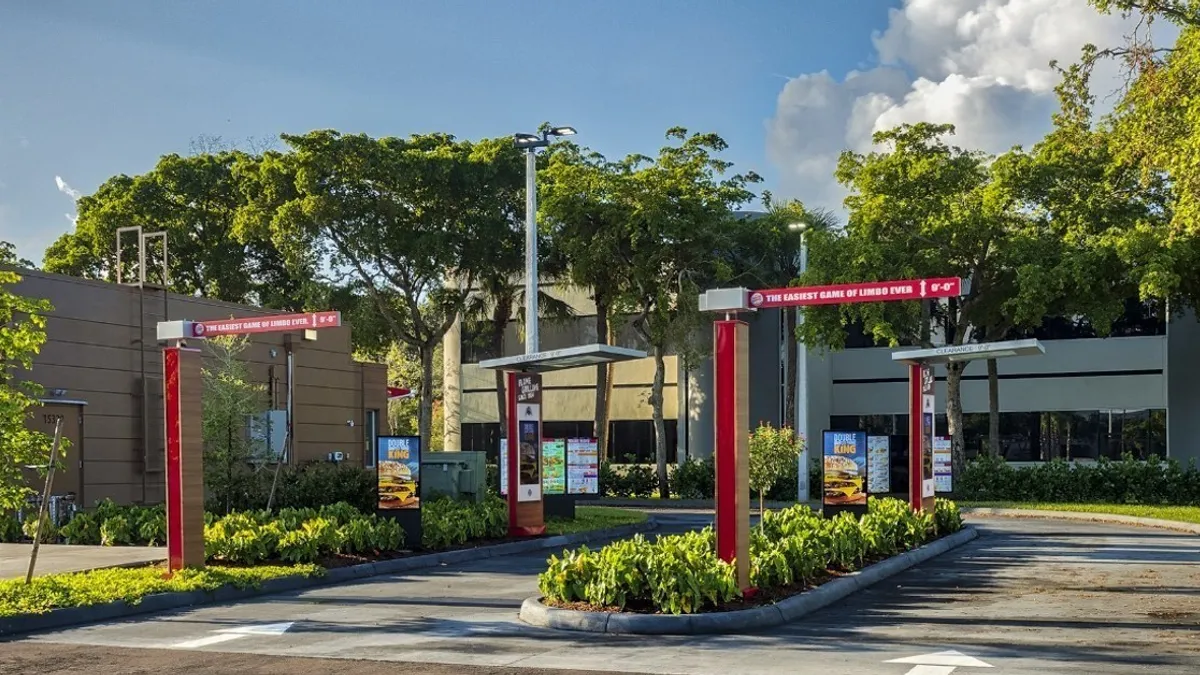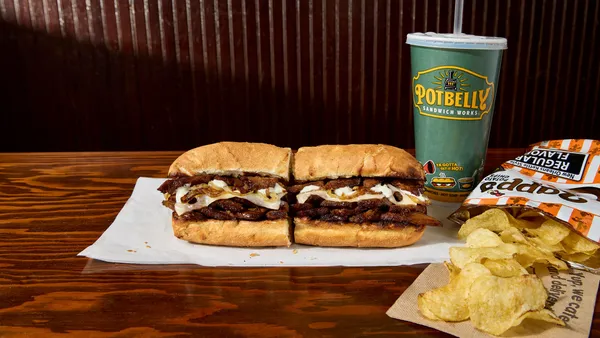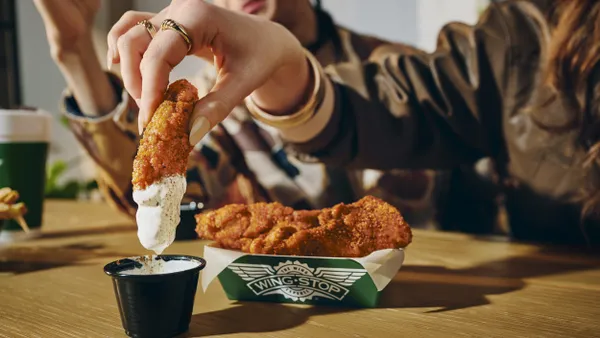Dive Brief:
- Burger King is planning to simplify its menu and remove some products that have become too complicated to build in order to improve drive-thru times, José Cil, CEO of parent company Restaurant Brands International, said on Wednesday during the Morgan Stanley Virtual Global Consumer & Retail Conference.
- The chain will also improve menu design to make it easier for customers to make quick decisions at the drive-thru, he said, adding that Burger King added new technology in the back-of-house for sandwich prep to improve order accuracy.
- Burger King's drive-thru time was 359 seconds in 2021, according to QSR Magazine's 2021 Drive-Thru study, placing it fourth from last in speed of service among the 10 chains analyzed. Comparatively, its average drive-thru time was about 344 seconds in 2020, per SeeLevel HX's 2020 Annual Drive-Thru study.
Dive Insight:
Burger King has been increasingly focused on improving its drive-thru performance since 2020. Last year, the chain began debuting outdoor digital menu boards with the goal of installing 40,000 digital screens that offer predictive selling technology, loyalty integration and remote and contactless payment by mid-2022. As of the end of the third quarter, 50% of Burger King drive-thrus featured these menu boards, with 75% expected to receive them by the end of the year, Cil said during the company's Q3 call in October.
These digital menu boards have improved efficiency and average check, Cil said at the Morgan Stanley event. Burger King's latest strategy could bolster these early improvements.
"All this is aimed at addressing operational improvements and addressing drive-thru capacity, which given the volume increases in drive-thru, is really an easy win in terms of driving additional volume in our business," Cil said during the Morgan Stanley conference. "We got too slow and we need to address that to have higher throughput in the business."
Drive-thru makes up 80% of Burger King's sales, Cil said on the Q3 call, so improving this channel will help increase same-store sales volumes and overall systemwide sales, both of which have gained momentum since 2020. Comparable sales increased 7.9% for Burger King during the third quarter compared to a negative 7% in the year-ago quarter, while systemwide sales grew 12.3% in Q3 compared to a decline of 7.9% in the year-ago quarter, according to an earnings release.
The company has also continued the roll out of its Burger King of Tomorrow modernization efforts, which began in 2018. By the end of the year, about a quarter of its locations will have the Burger King of Tomorrow remodels, Cil said during the Morgan Stanley conference.
Compared to prior reimaging programs that were rolled out in 2011 through 2014, the latest store redesign has more enhancements in the drive-thru, including double drive-thrus where available, outdoor digital menu boards and other technologies, Cil said. Burger King is also testing two new prototypes in Miami, Latin America and the Caribbean this year that have dedicated mobile order and curbside pickup ares, drive-in and walk-up order areas and enhanced drive-thrus with new builds.














